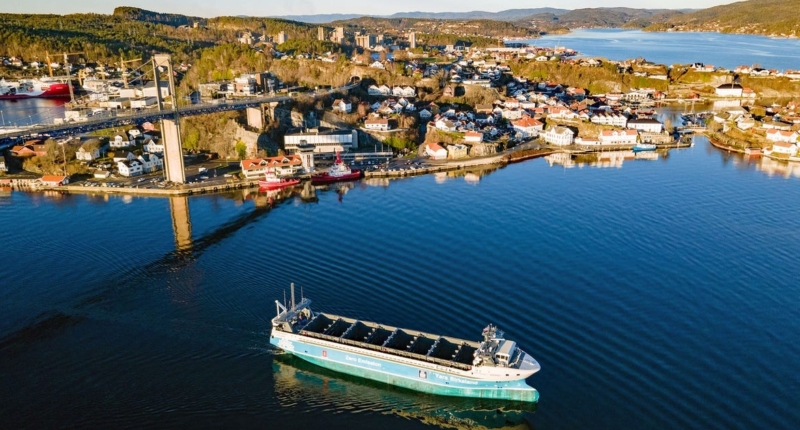Shipping companies in Norway are exploring ways to automate their fleets and minimize human intervention on container ships. The Yara Birkeland, a container ship capable of carrying up to 100 containers, is one of the vessels being fitted with sensors and cameras that allow it to operate with minimal human intervention. Currently, the Yara Birkeland has a crew of five, but that number will be reduced to two by the end of 2023. The ship’s captain will be based at an on-shore operations center where they will remotely oversee the voyages undertaken by several ships at once. Meanwhile, engineers are developing “robust” propulsion systems that don’t require maintenance from crew mid-journey. However, one major hurdle autonomous ships face is legislation. The International Maritime Organization is working to establish a framework to accommodate autonomous ships, but the current regulations are based on the presumption that a ship’s equipment is manually controlled.
The Advancement of Self-Sailing Ships
Shipping companies in Norway are looking to automate their fleets and remove crews from the bridge and move them onto dry land. Autonomous technology is now being used to remove the need for human intervention not only in cars, taxis, trucks, or trains but also on container ships. The development of autonomous ships is growing worldwide and companies are continually exploring new ways to reduce human interaction while shipping freight across the waves.
According to a BBC report, a fertilizer company in Norway, Yara, is currently reducing the number of crew members operating one of its 80-meter container ships, the Yara Birkeland, which can carry up to 100 containers. Currently, the Yara Birkeland has a crew of five and sails twice a week along the Frier Fjord in southern Norway. However, the crew will be downsized to two by the end of this year, with the goal of removing the bridge entirely in the next two years.
When the bridge is removed, the ship’s captain will work from an on-shore operations center where they will remotely oversee the voyages of several ships at once. They will be able to intervene if necessary, but for the most part, the ships will sail themselves. To enable the vessel to sail independently, Yara has installed sensors and cameras that scan the ship’s route along the Frier Fjord. During the voyage, the ship gathers information on the journey, the conditions, and the surroundings.
The BBC report indicates that repetitive journeys are a perfect way to introduce autonomous ships to the system. Along with Yara’s project, two battery-powered autonomous barges are operating in the Oslo Fjord, which is run by Nordic grocer Asko, and a fourth container ship is operating near Ålesund. All of these vessels utilize technology from autonomous vehicle expert Kongsberg.
Marius Tannum, an Associate Professor of Applied Autonomy at the University of South-Eastern Norway, stated that “You can use autonomy to limit tasks that are dangerous or boring. The Yara Birkeland project and the Asko barge project are pushing the technology out into the real world, and not just in research labs, like we have been doing for many years.” Companies like Yara are leading the charge in automating shipping fleets and making voyages safer and more efficient.
The Roadblocks to Widespread Adoption of Autonomous Ships
The technology that enables autonomous ships is scaling up, with a car ferry using autonomous technology to navigate and dock itself. However, experts warn that autonomous ships face a significant obstacle: legislation. The current regulations are based on the presumption that a ship’s equipment is manually controlled, and the International Maritime Organization is working to establish a framework to accommodate autonomous ships.
Norwegian marine authorities and politicians are in uncharted waters, and their decisions will have international consequences, says Yara project manager Jon Sletten. Once legislation is in place, engineers will need to develop “robust” propulsion systems that don’t require crew maintenance mid-journey. Additionally, autonomous ships must perform as well, if not better than, vessels with an on-board crew. Experts predict that once these obstacles are overcome, the technology will advance rapidly and could become widespread faster than self-driving cars or trucks.
Don’t miss interesting posts on Famousbio

